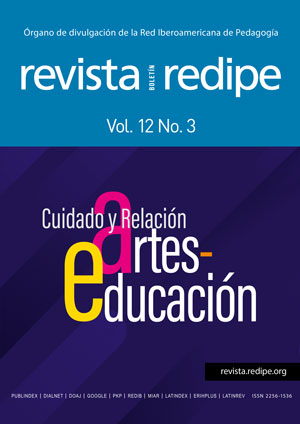Sleep and academic performance: An important relationship
Main Article Content
Keywords
Sleep cycles, Academic performance, Mathematical relationship, University students
Abstract
Sleep is an important part of our biology as living beings, since during this activity several processes are carried out within our body that help us maintain physical and mental conditions in an optimal state. The purpose of the study presented is to identify the relationship between daytime sleepiness, due to no, through the Epworth test, and the variable low academic performance, through the grades obtained by the students in the sample (n=179). A ratio greater than 1 was found between the probability of having high sleepiness and low performance (OR=1.85; p=0.001). A mathematical function was also identified that measures the sleep cycle that a person reached, in addition to They give advice to the students to improve their rest.
References
Bijwadia J, Dexler D. (2006). The student with sleep complaints. In Lee-Chiong TL, ed. Sleep: a comprehensive handbook. Hoboken, NJ: John Wiley & Sons, pp. 959-63.
Chica-Urzola HL, Escobar-Córdoba F, Eslava- Schmalbach J.Validating (2007). The Epworth sleepiness scale. Rev Salud Pública (Bogotá), 9, pp. 558–67.
Gardey, A., & Pérez, J. (2017). Definicion del
sueño. México.
Giannotti F, Cortesi F, Sebastiani T, Ottaviano
S. (2002). Circadian preference, sleep and daytime behaviour in adolescence. Journal of Sleep Research, 11(3), pp.191-99.
Laberge L, Carrier J, Lesperance P, Lambert C, Vitaro F, Tremblay RE. (2000). Sleep and circadian phase characteristics of adolescent and young adult males in a naturalistic summertime condition. Chronobiol Int., 17(4), pp. 489-501.
Healhl. (2018). El sueño y sus afectactaciones.
Singapur. Obtenido de https://www. healthline.com/health/es/depresion-y- sueno
Hernández-Sampieri, R & Mendoza, Ch. P. (2018). Metodología De La Investigación: Las rutas cuantitativa, cualitativa y mixta. México: Mc Graw Hill.
Hershner SD, Chervin RD.(2014). Causes and consequences of sleepiness among college students. Nat Sci Sleep, 6, pp.73-84.
INS. (2021). ¿Qué es el sueño? Instituto del sueño, Madrid. Recuperado el 08 de junio de 2022, de https://www.iis.es/ que-es-como-se-produce-el-sueno- fases-cuantas-horas-dormir/
Machado-Duque ME, Chabur JEE, Machado- Alba JE. (2015). Somnolencia diurna excesiva, mala calidad del sueño y bajo rendimiento académico en estudiantes de medicina. Revista Colombiana de Psiquiatría, 44, pp. 137-42.
McCarley RW. (2011).Neurobiology of REM sleep. Handb Clin Neurol. 98, pp. 151- 71.
McCormick DA, Westbrook GL. (2013). Sleep and dreaming. En: Kandel ER, Schwartz JH, Jessell TM, Siegelbaum SA, Hudspeth AJ, editores. Principles of neural science. 5 ed. New York: Mc Graw Hill Medical, pp. 1140-58.
Orzech KM, Salafsky DB, Hamilton LA. (2015). The state of sleep among college students at a large public university. J Am Coll Health, 59, pp. 612-9
Peters BR, Joireman J, Ridgway RL. (2005). Individual differences in the consideration of future consequences scale correlate with sleep habits, sleep quality, and GPA in university students. Psychol Rep, 96, pp. 817-24.
Tavernier R, Willoughby T. (2014). Bidirectional associations between sleep (quality and duration) and psychosocial functioning across the universit years. Dev Psychol 50, p. 674.
Taylor DJ, Vatthauer KE, Bramoweth AD, Ruggero C, Roane B. (2011). The role of sleep in predicting college academic performance: is it a unique predictor? Behav Sleep Med, 11, pp. 159-72.
Thacher PV. (2008). University students and the ‘all-nighternighter’: correlates and patterns of students’ engagement in a single night of total sleep deprivation. Behav Sleep Med, 6, pp. 16-31.
Sinton CM, McCarley RW. (2004). Neurophysiological mechanisms of sleep and wakefulness: a question of balance. Semin Neurol, 3, pp. 211-23.
Vela-Bueno A, Fernández-Mendoza J, Olavarrieta-Bernardino S. (2009). Sleep patterns in the transition from adolescence to young adulthood. Sleep Med Clin, 4, pp. 77-85.
Veldi M, Aluoja A, Vasar V. (2005). Sleep quality and more common sleep-related problems in medical students. Sleep Med, 6, pp. 269-75.



